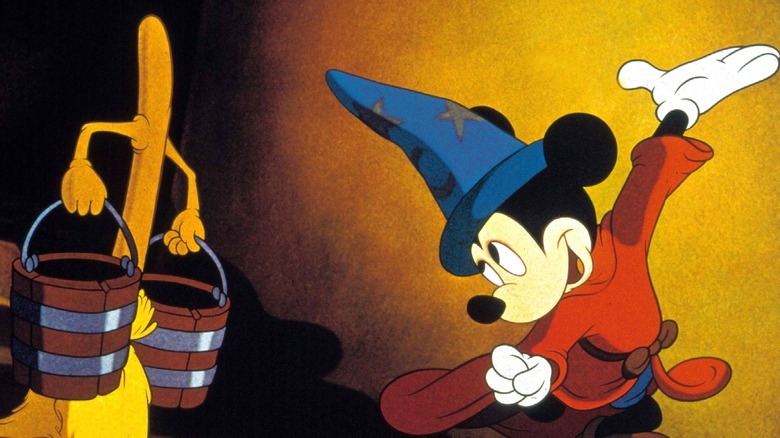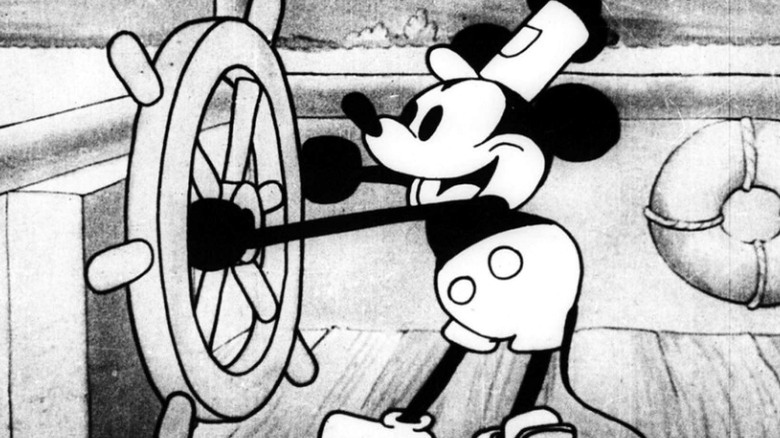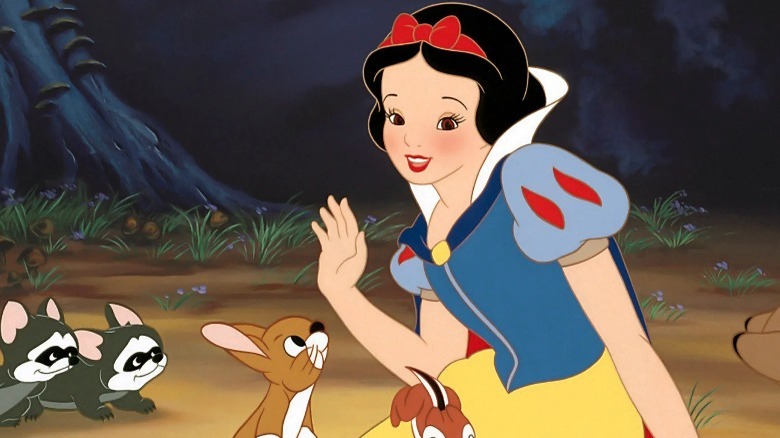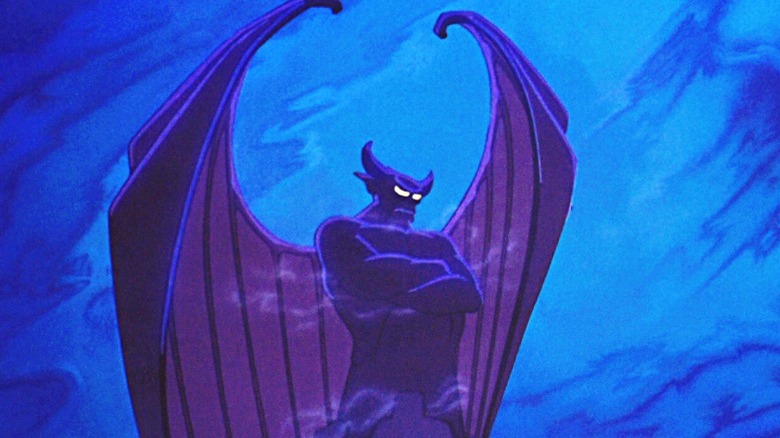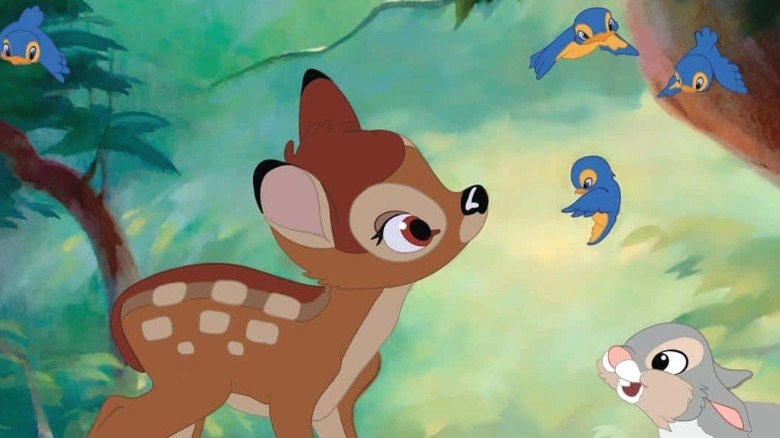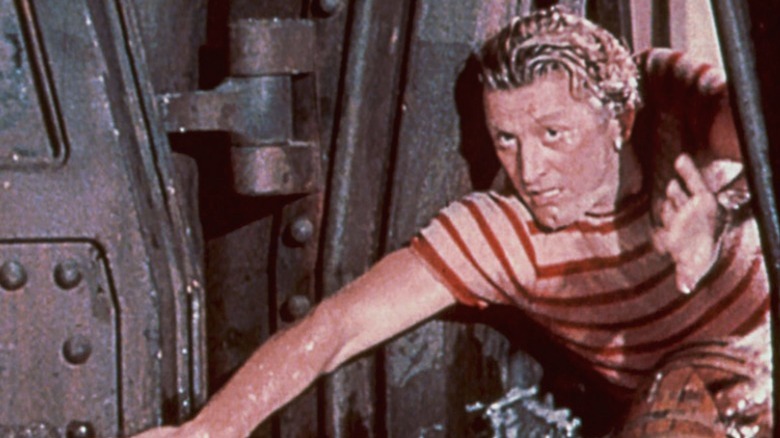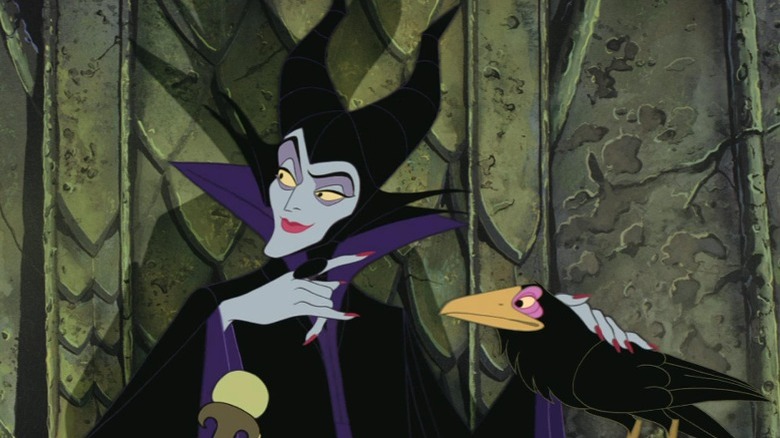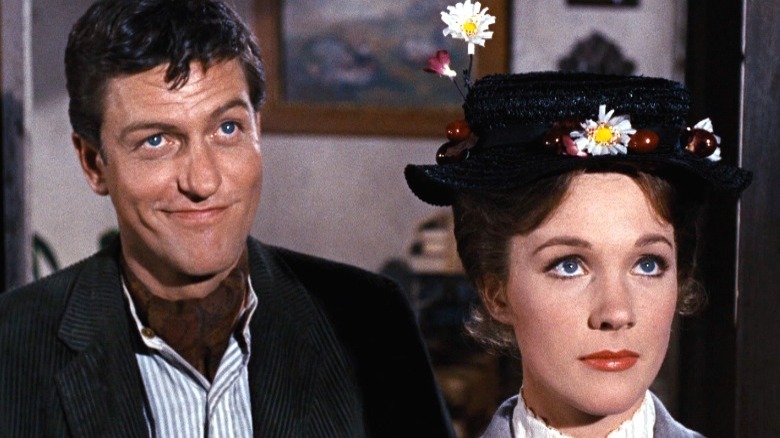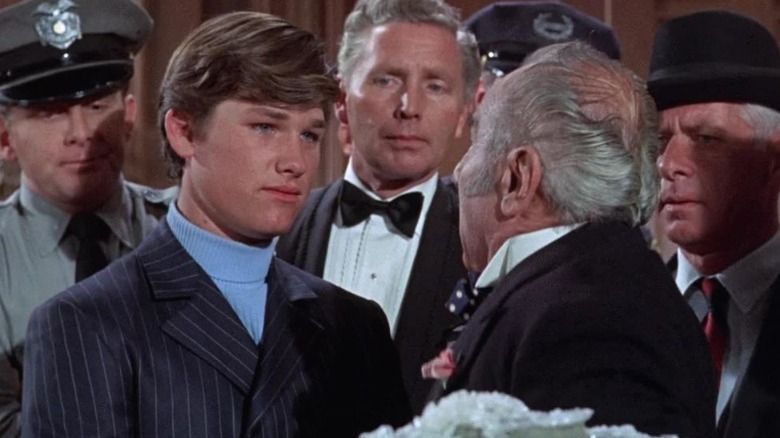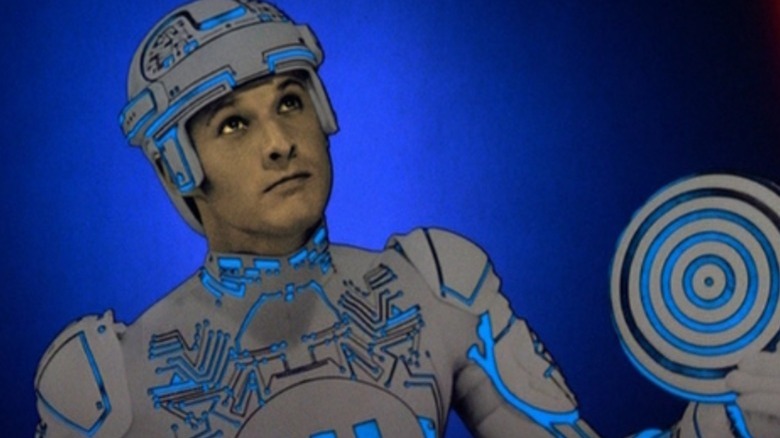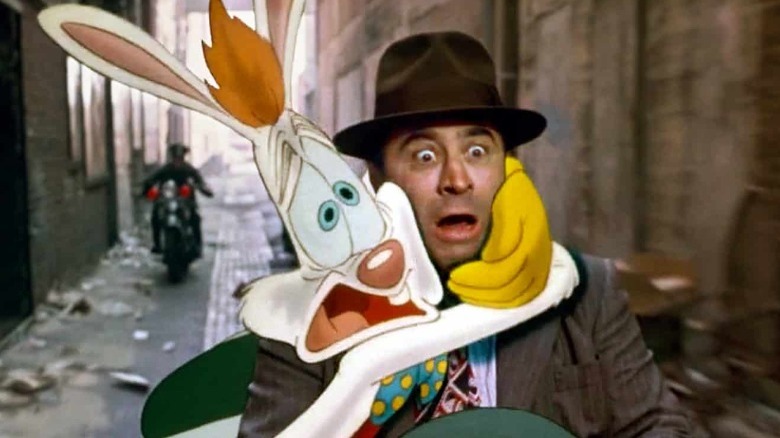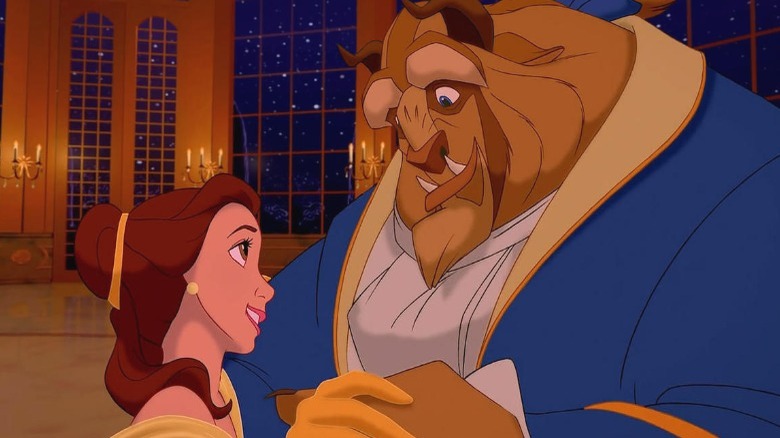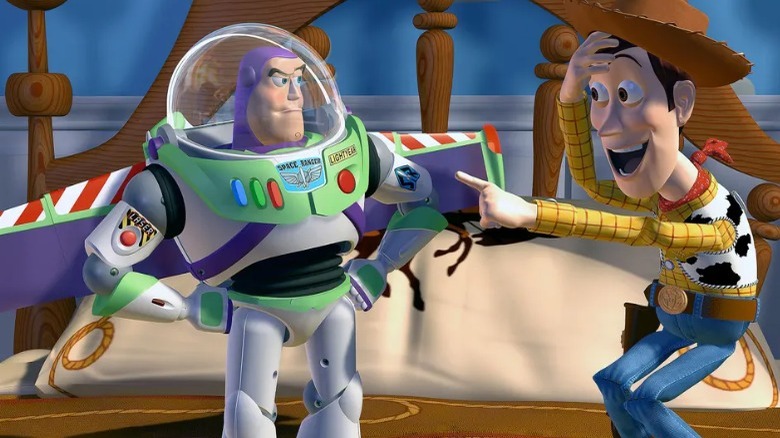The 12 Most Influential Disney Movies Of All Time
In 1923, Walt Disney and his brother Roy founded a studio that enjoyed modest success with a line of "Alice" shorts. It wouldn't be branded the Walt Disney Studio until 1926, and with that came the rise of Disney's first mascot, Oswald the Lucky Rabbit. Mickey wasn't long after, and neither was World War II. Disney's ambitions remained firm despite the nation's focus on the global conflict, and Disney continued to nurture his animation goals while they produced propaganda shorts for the war effort.
Since those tough times, Disney animators and effects crews have changed the landscape of modern cinema. From the quality of their animation to the integration of CGI effects, Disney has been a pioneer for nearly a century. Today Disney's parks thrive, Disney+ is a streaming juggernaut, and new techniques continue to be invented. It's a sour note that so many of Disney's works today have lost sight of the humble but powerful animation that gave them their start, but the Mouse endures. Disney changed the world, and here are 12 of their most influential movies.
Steamboat Willie (1928)
At less than eight minutes long, "Steamboat Willie," the first major film debut of Mickey Mouse is understated. It's pure slapstick. A hapless Mickey acts as the bulky Pete's crewmate aboard a steamer that's picking up cargo along the river, though he first presents himself (falsely) as its captain. Mickey's not exactly a dedicated worker, however. He's always running late, getting into trouble, and having singalongs with the animals down in the cargo bay.
It's a remarkable film for what it tries to accomplish, and how it succeeds. "Steamboat Willie" isn't the first short to have sound, as Walt Disney's competitor Fleischer Studios (home of "Betty Boop") had already tried to set their films to sound and music. It was hard to keep synch, though, much less charm the audience. That's where "Steamboat Willie" took the lead using a hidden tempo tracker, a bouncing ball in an unused corner of the screen to help the sound match up with the action. The result delighted audiences and critics alike, and that's how Disney became one of the biggest movers on the cartoon scene.
Snow White and the Seven Dwarfs (1937)
As the first full-length animated feature film, 1937's "Snow White and the Seven Dwarfs" isn't just a milestone of luscious, lively action. It pioneered certain animation techniques, including the vivacious red blush across Snow White's cheeks. That was achieved by a sole animator named Helen Ogger, not actual makeup like legend suggests. Ogger carefully stippled red dye on individual cells, ensuring continuity between sometimes frantic moments of animation. It was a technique so intensive and unique that "Snow White" remains the only film to attempt it.
Before that, Walt Disney had to fight to get his dream into production. A struggle referred to as "Disney's Folly" at the time, Walt desperately shopped around to get financing to create "Snow White." Regarded with derision, his luck changed when Joseph Rosenberg, a vice president at the Bank of America, chose to bankroll the expensive project. The result is movie history, the recipient of a unique Academy Award that was presented by Shirley Temple and designed to match Disney's first princess and her seven friends.
Fantasia (1940)
Shocking to think that "Fantasia," Walt Disney's glorious homage to the power of music, was first released in 1940. While "Fantasia 2000" was released in 1999, "Fantasia" feels so much more wild and alive, as if it were made no earlier than the '70s. A truncated franchise due to the economics of World War II, "Fantasia" premiered in stereo sound for the first time in movie history, with a brief theatrical run using specially-constructed Fantasound equipment to try and replicate the sound of a live orchestra.
The crowning gem of "Fantasia" is, naturally, "The Sorcerer's Apprentice." Mickey's antics slip the eye of his disapproving wizard master — Yen Sid, as "Kingdom Hearts" fans know — and eventually an army of broomsticks cause mayhem in the wizard's tower. For those that love shivery things, however, "Night on Bald Mountain" is the rockstar segment, with Slavic folklore providing the basis for the intimidating demon named Chernabog.
Bambi (1942)
It may be news to you that "Bambi," Walt Disney's fifth animated film, is also an adaptation of a classic tale. Based on the 1923 bestseller by Jewish Austrian author Felix Salten, both he and "Bambi" were introduced to Disney by the co-founder of Simon & Schuster, Max Schuster, who personally brought Selten to America, barely avoiding murder at the hands of the Nazis who were now marching towards world war.
"Bambi" is the first animated movie to feature no human roles, though human references were used for scenes like Thumper's ice-skating ballet. By necessity, it also became the first film to take the animators out of the studio to inspect the natural world. Frequent visits to the Los Angeles Zoo and a small stable of live animals kept at the studio allowed the artists to work. The Chinese artist Tyrus Wong's beautiful style helped inspire the backgrounds. "Bambi" is a timeless film, an earnest advocate for environmentalism that predates Studio Ghibli.
20,000 Leagues Under the Sea (1954)
Today, the Disney company is all about understanding its brand. Its family-friendly output is a gold standard, but it wasn't long before Walt Disney had some bigger ideas that his previous distributors would balk at. The answer was in creating Buena Vista Distribution, the first iteration of Disney's in-house film distribution system. Originally set up by Roy Disney over a dispute with RKO regarding a nature documentary, the science fiction epic "20,000 Leagues Under the Sea" became Buena Vista's first blockbuster release.
Starring Kirk Douglas as our hero Ned versus James Mason's reclusive and proud Captain Nemo, the film is a special effects masterclass. Jules Verne's novel provides not just some of the roots of steampunk, but a bombastic slap fight between man's new machines and a giant octopus. There are also traces of anti-colonialism and anti-war motifs, though it's all overpowered by Nemo's fierce loyalty to his people. The results are astounding and the movie still holds up today, with Mason's performance remaining one of the greatest depictions of Nemo to date.
Sleeping Beauty (1959)
Released in 1959, "Sleeping Beauty" looks like no other Disney film. There are a few reasons for that, and one is its angular, often luminescent style. Artist Eyvind Earle set the tone for the movie's production, leading to an unusually gothic aesthetic. It was one the house's animators often struggled with, leading to resentment and infighting. Yet the final result is stunning, with the villainous Maleficent becoming the unlikely standout. Years later she's the heroine of her own story in her self-titled franchise, as gothic and complex as Earle's own art.
The other remarkable aspect of "Sleeping Beauty" is its (not to make a pun) aspect ratio. This was the first film to use a new 70mm widescreen format, Super Technirama 70. This new anamorphic ratio didn't overtake CinemaScope as the market leader, but the detailed results made "Sleeping Beauty" an event not to be missed at theaters capable of displaying this versus the standard 35mm format. Technirama would thrive for only a decade, but it also turned both "Spartacus" and "Zulu" into astonishing spectacles.
Mary Poppins (1964)
Before "Who Framed Roger Rabbit," there was "Mary Poppins." Though it's far from the first film to blend animation and live-action (the technique was used in short films since the '20s) it succeeds in making it feel natural. Winner of the Academy Award for special effects in 1965 (and best actress for Julie Andrews), the film's most ingenious segment is the penguin dance. Filmed against a white screen lit with a yellow vapor hue instead of the more common blue screen chroma key technique, the final result was so clear that Mary's transparent veil could pick up details of the composited background behind her.
"Mary Poppins" is also Walt Disney's crowning live-action achievement. It's the biggest film Disney would create in his lifetime, lauded by critics and beloved by audiences and the box office winner of the year. Unfortunately, it was also the last victory Walt would personally witness since he died in 1966, but the future legacy of his creation was now well-secured.
The Computer Wore Tennis Shoes (1969)
The story of Walt Disney's fascination with Kurt Russell in the final seconds of his life is somewhat true, but it's told in a way that buries the lede. Kurt was a 14-year-old with a list of television performances who'd only recently been signed to a ten-year contract with Disney on the day Walt died. No one knew what Walt's note meant, but the studio went all-in on its young new star anyway. 1969's "The Computer Wore Tennis Shoes" wasn't Russell's first gig under his new decade contract (that was a small role in "Follow Me, Boys!" in 1966), but the former film was his first starring role, the inaugeral step on his road to becoming Snake Plissken for John Carpenter in 1981's "Escape From New York."
"The Computer Wore Tennis Shoes" is a cute flick with secret continuity. Russell, as Dexter Reilly, attends Medfield College with his friends. Medfield is Disney's family-friendly Miskatonic University, the setting of the Flubber-iffic antics of "The Absent-Minded Professor." Like that franchise, science takes a turn for the weird as Dexter gets his brain scrambled up with a computer. Then a gambling ring gets involved. It's charming, it's messy, and teenage Kurt has dimples. The movie world would never be the same.
Tron (1982)
Computer-generated effects are the natural evolution of what the wizards of the movie industry have been creating since George Méliés filmed "A Trip to the Moon." CGI's on-screen roots are understated, their premiere outing being a few seconds of scrambled pixels in the original "Westworld." But 1982's "Tron" put CGI front and center, with a cornball plot that puts its hero Kevin Flynn (Jeff Bridges) in the minds of our machines.
It's not all CGI that brings the digital world to life, though. "Tron" uses about 20 minutes of CGI to flesh out its world of light cycles and sprawling cities. The rest is clever animation techniques, from rotoscoping to backlit animation, to make those lines of lights on everyone's suits pop. The world inside was filmed in black and white to make the process a little bit easier on animators, but not by much. Despite their work, the Academy declined to allow "Tron" to be nominated for its effects work, claiming that using computers was cheating. How the world has changed since.
Who Framed Roger Rabbit (1988)
By the '80s, Disney sought to diversify its fare to include older audiences. Their family-friendly fame worked against them, though, and anything labeled "Disney" meant kiddie time. To combat this new problem, Disney created Touchstone Pictures. It's under this banner that director Robert Zemeckis released "Who Framed Roger Rabbit" in 1988, the first time Disney, Warner Bros., and a host of other classic animations (from Felix the Cat to Betty Boop) appear together on the big screen. A highlight of animation diplomacy, and a landmark moment.
For this film's blend of live-action and animation, the effects crew knew they had to go in hard. So they frequently went even harder. The gold standard for integrating animation effects is the film that codified "bumping the lamp." A small detail that hides technical complexity, the animated Roger Rabbit and the real Eddie Valiant (Bob Hoskins) are fumbling their way to freedom under the light of an unstable lamp. As the shadows roil and move, the animators ensured they strike Roger perfectly at every angle. Necessary? No. Awesome? Totally.
Beauty and the Beast (1991)
Like "Mad Max: Fury Road" proved, CGI isn't the new modern devil of filmmaking. Like a good spice, the key is in its proportion. Usually, the best way to hide big CGI effects and make them feel natural is to blend them with other effects work. This keeps the computerized stuff from overpowering the scene. "Beauty and the Beast" is a masterclass in how to do it, with its glorious ballroom sequence blending together multiple effects to create something special.
Legendary animator James Baxter led the way on the animation side, sketching out how Belle's dance with the gentle Beast would flow throughout the massive ballroom. CG supervisor James Hillin had to work in concert with the animation team to create their gilded background, uplifting but not overpowering the pair. The result is perfect harmony, and "Beauty and the Beast" became the first Disney animated film to receive a best picture nomination from the Academy. That's a long way from the derision "Tron" received.
Toy Story (1995)
Not content with their earlier breakthroughs with CGI effects, 1995 saw the first fully CGI feature film. "Toy Story" was Pixar's first full-length film, produced and distributed in concert with Disney, who would eventually buy the powerhouse studio in 2006. Though there's a different side to the success of "Toy Story," one told by traditional cel animators who've since struggled to find the support Disney once lent them, it's hard not to also respect the triumph "Toy Story" represents for the future of visionary new technologies.
As a story, this groundbreaker works with its still-chunky animation style. There's no need to feel the uncanny valley when we see Woody and Buzz interacting. It's just a big 3-D playground, fired by a child's imagination. Since this film was first released, CGI productions have become the new norm, with new leaps in technical achievement every few years. For better or worse, "Toy Story" changed the world of animation. The next big leap is yet to be seen.
